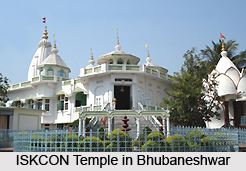 The undertaking of this nonsectarian, monotheistic movement is to encourage the well being of society by teaching the science of Krishna consciousness as per the Bhagavad-Gita and other prehistoric scriptures.
The undertaking of this nonsectarian, monotheistic movement is to encourage the well being of society by teaching the science of Krishna consciousness as per the Bhagavad-Gita and other prehistoric scriptures.
ISKCON- International Society of Krishna Consciousness belongs to the Gaudiya Vaisnava tradition, a devotional tradition based on the teachings of Bhagavad-Gita and Srimad Bhagavatam.
The precepts and practices of ISKCON were taught and codified by the 15th century saint and religious reformer Sri Caitanya Mahaprabhu and his principle associates, the Six Gosvamis of Vrindavana.
Sri Caitanya, whom devotees venerate as a direct incarnation of Krishna, gave a powerful impetus for a massive bhakti (devotional) movement throughout India. Under his direction hundreds of volumes on the philosophy of Krishna consciousness were compiled. Many devotees have followed in the line of Sri Caitanya Mahaprabhu including, in the 19th century, an exceptional Vaisnava theologian, Bhaktivinoda Thakura who brought Krishna consciousness to a modern audience.
Bhaktivinoda`s son, Bhaktisiddhanta Sarasvati Goswami, became the guru of Srila Prabhupada and instructed him to spread Krishna consciousness in the West.
Festivals:
One of the features of Vaisnavism is the towering number of festivals in the year. Festivals provide an opportunity to remember Krishna and His devotees and to increase one`s spiritual practice. Fasting, usually followed by feasting, marks the year`s major festivals. The Vaisnava year is based on a lunar calendar rather than a solar calendar. This means that the dates of the festivals vary from year to year.
The Krishna Balaram temple is beautifully designed and painted in sober colours with all ingrained facilities available for devotees.





















